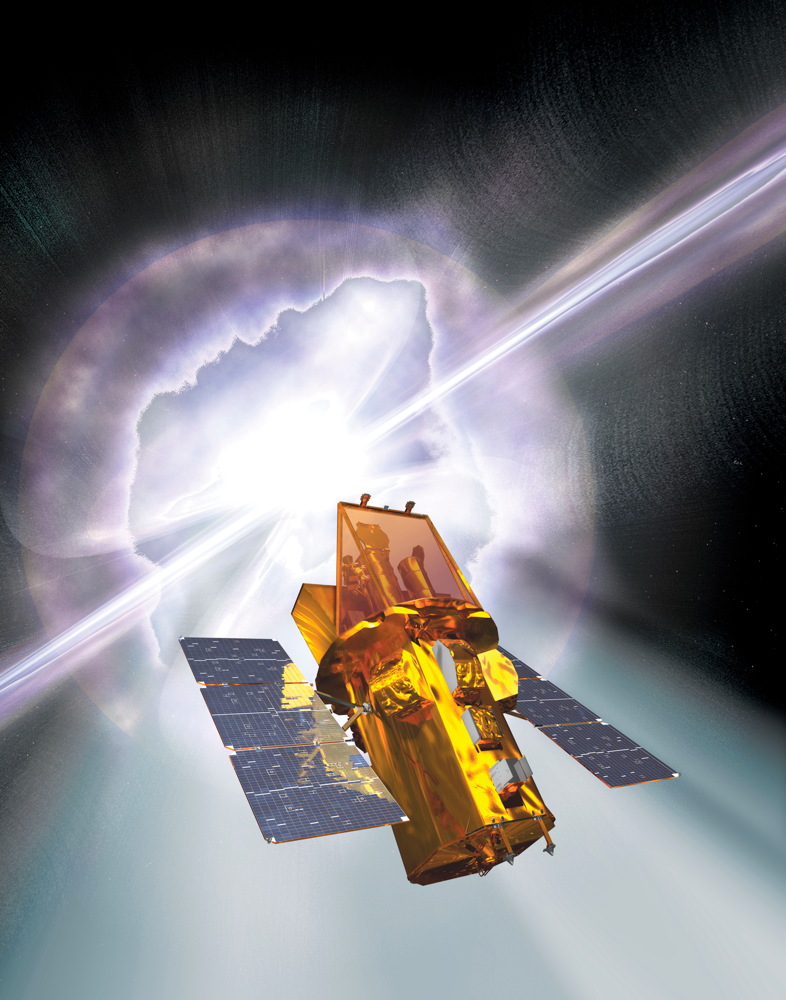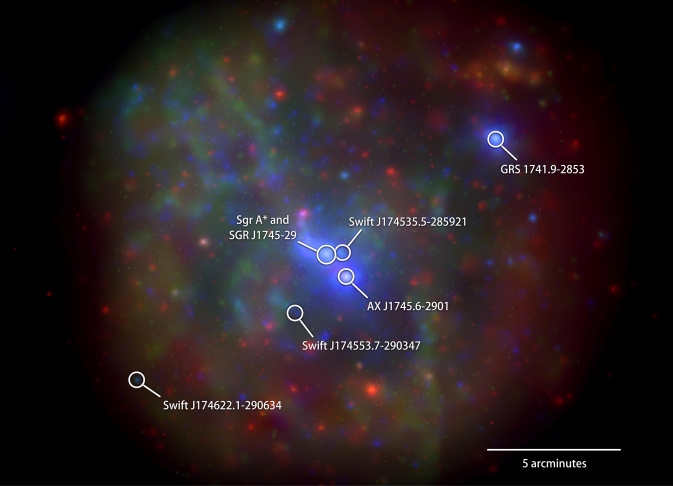Cosmic Explosion-Hunting Space Telescope Earns Top Rank at NASA

A NASA space telescope built to seek out the most powerful explosions in the universe has earned top billing on the space agency's list of nine astronomical observatory missions.
The space-based Swift X-ray observatory took the top spot in NASA's latest biannual review of its astronomy missions. The study, which does not include the Hubble Space Telescope and Chandra X-ray Observatory, evaluates the scientific performance of the remaining space telescopes to determine if they should continue operations and what their level of funding should be.
"The entire Swift team is delighted that NASA has recognized the high priority of our scientific mission and has extended it for at least another two years," David Burrows, of Pennsylvania State University, said in a statement.
Burrows serves as the lead scientist for Swift's X-ray telescope.
The Swift observatory relies on three instruments to discover and measure gamma-ray bursts, the universe's most energetic explosions. These brief but powerful explosions occur roughly once a day, lasting only a few milliseconds to a few hundred seconds. Scientists think that the powerful bursts are created when black holes and neutron stars form.

Swift not only detects these puzzling phenomena, it also provides a rapid response notification that allows both space- and ground-based telescopes around the world to study their afterglow.
"Swift's built-in, near-immediate response capability allows us to make early, frequent, and continuing observations of new gamma-ray bursts, supernova explosions, and other powerful explosions in the universe," principle investigator Neil Gehrels of NASA's Goddard Space Flight Center said in the same statement.
Get the Space.com Newsletter
Breaking space news, the latest updates on rocket launches, skywatching events and more!
Launched in 2004, Swift has provided several notable detections of gamma ray bursts, including one that occurred approximately 520 million years after the Big Bang. The finding ensures that the telescope will continue to operate for at least another two years.
In addition to Swift, the other 8 astronomical telescopes reviewed by NASA were Fermi, Kepler, MaxWISE, NuSTAR, Planck, Spitzer, Suzaku, and XMM-Newton. Hubble and Chandra were reviewed separately.
"Swift continues to provide unique and exciting science both as stand-alone results and as part of multi-wavelength campaigns," the review said. "Swift is the premier facility for multi-wavelength time-domain astronomy in the world."
Follow us @Spacedotcom, Facebook and Google+. Original article on Space.com.
Join our Space Forums to keep talking space on the latest missions, night sky and more! And if you have a news tip, correction or comment, let us know at: community@space.com.

Nola Taylor Tillman is a contributing writer for Space.com. She loves all things space and astronomy-related, and enjoys the opportunity to learn more. She has a Bachelor’s degree in English and Astrophysics from Agnes Scott college and served as an intern at Sky & Telescope magazine. In her free time, she homeschools her four children. Follow her on Twitter at @NolaTRedd









